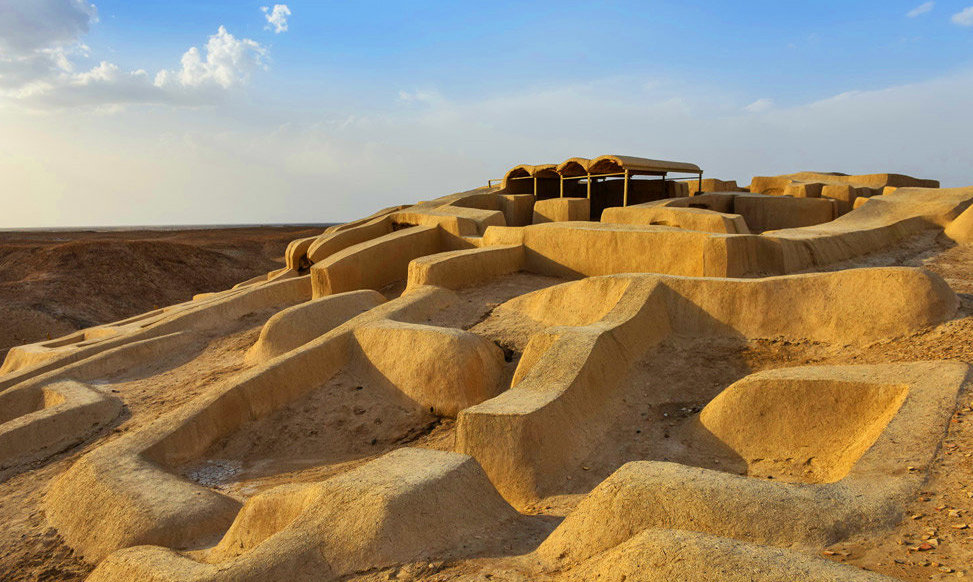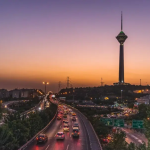Have you ever wondered what life was like over 5000 years ago? What kind of society existed during the Bronze Age? How did ancient civilizations manage to thrive and survive in harsh environmental conditions? Shahr-e Sukhteh, also known as the Burnt City, offers a unique and fascinating glimpse into the past, providing answers to these questions and more.
Located in the southeastern province of Sistan and Baluchistan in Iran, this ancient city has been the subject of extensive archaeological research, uncovering a wealth of artifacts and evidence of a complex and advanced society. Are you ready to explore the wonders of this ancient city and discover the secrets of the past?
To visit Shahr-e Sukhteh, don’t hesitate to look into our Iran World Heritage Tour.
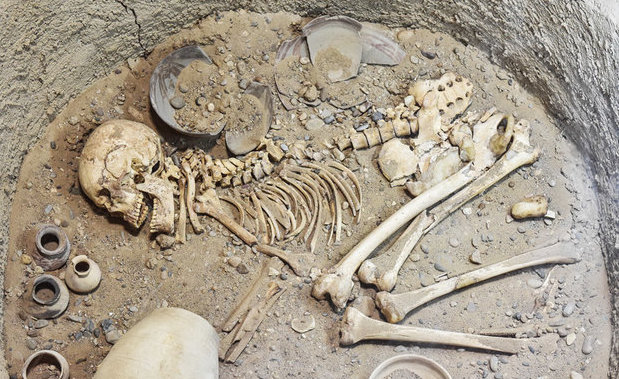
Shahr-e Sukhteh, also known as the Burnt City, is one of the most significant archaeological sites in Iran and the world. Located in the southeastern province of Sistan and Baluchistan, the city dates back to the Bronze Age, around 3200 BCE, and was inhabited for over a thousand years before being abandoned. The city was discovered in the early 20th century by a group of French archaeologists and has since been recognized as a UNESCO World Heritage Site and a symbol of Iran’s rich cultural heritage.
History and Discovery
Shahr-e-Sukhteh, a site related to the ancient Jiroft culture, is recognized as one of the oldest civilizations on Earth. The history of Shahr-e Sukhteh is shrouded in mystery. The city was destroyed and rebuilt several times throughout its history, with the latest destruction occurring around 1800 BCE. The cause of the city’s destruction is not known, but it is believed to have been due to a combination of natural disasters, such as earthquakes and floods, and human factors, such as war and conflict.
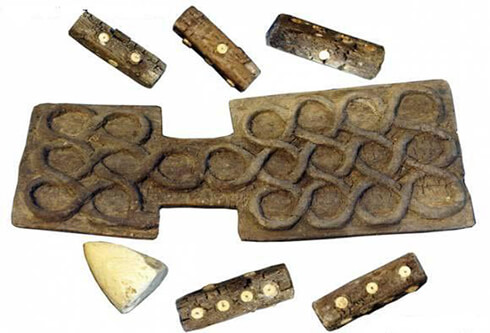
Life in Shahr-e Sukhteh
Thanks to the abundant water of the Hirmand River, Shahr-e Sukhteh was a bustling city with a complex social and economic system. Archaeological evidence suggests that the city was home to a diverse population of farmers, craftsmen, and traders, who engaged in activities such as agriculture, metalworking, and textile production. The city also had a sophisticated system of water management, with a network of canals and reservoirs that allowed for irrigation and agriculture.
The city was organized into different neighborhoods and districts, with each district having its own specialized function, such as pottery production, metalworking, and residential areas. The city was also home to a large cemetery, where thousands of people were buried over the course of the city’s history.
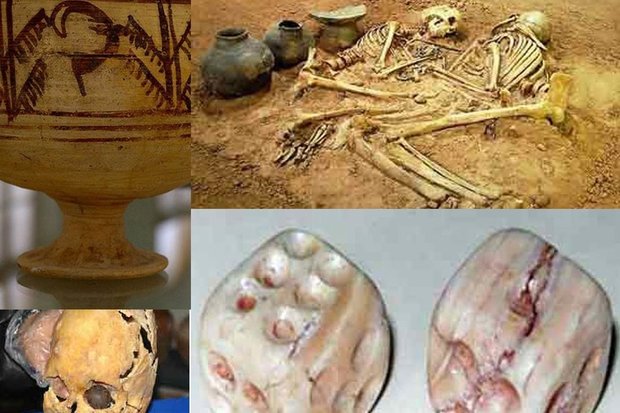
Artifacts and Discoveries
The archaeological excavations at Shahr-e Sukhteh have yielded a wealth of artifacts and discoveries that offer insight into the daily life and culture of the city’s inhabitants. Here are some of the most notable discoveries from years of excavation:
- Artificial Eyeball: One of the most significant discoveries at Shahr-e Sukhteh is the world’s oldest example of artificial eyeballs. These were made of bitumen and attached to the eye sockets of a female skeleton, indicating that the ancient inhabitants of the city had a knowledge of medicine and surgery.
- Oldest Animation: A bowl is discovered in Shahr-e Sukhteh which is believed to be the oldest known depiction of an animal in motion. The images show a goat leaping towards a tree and then eating its leaves. It is kept in the Iran National Museum now.
- Brain Surgery: Archaeologists discovered the skull of a 13-year-old girl with a congenital hydrocephalus scar. The skull is displayed at the Iranian National Museum of Medical Sciences History and showcases the ancient medical practices of Iranians.
- Oldest Backgammon and Dice: The site also revealed the oldest known backgammon and dice, providing evidence of the city’s interest in games and leisure activities.
- Fishing Nets and Hooks: Nets and fishing hooks found in the city demonstrate that people were fishing in the nearby Hirmand River.
These discoveries offer a glimpse into the complexity and sophistication of the Jiroft culture and its people, providing insight into their daily lives, artistic achievements, and medical knowledge. The site continues to be a source of fascination for archaeologists and visitors, shedding light on the ancient world and the incredible achievements of our ancestors.
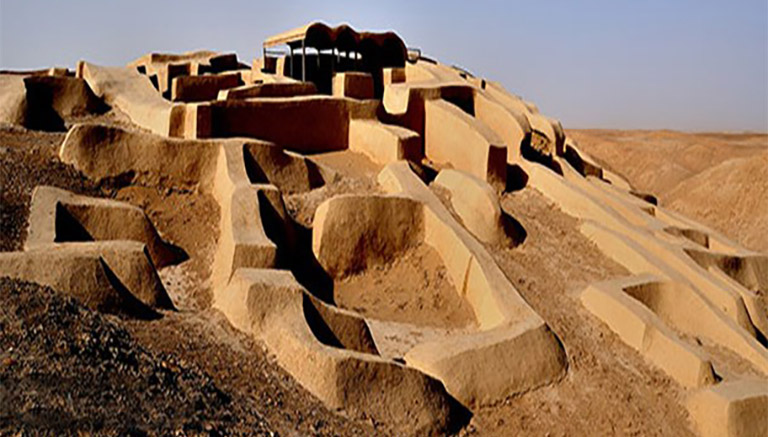
Significance and Preservation
Shahr-e Sukhteh is of great significance to our understanding of ancient civilization and the development of human society. The city’s advanced system of water management and its sophisticated pottery and metalworking techniques are just a few examples of the many cultural achievements of its inhabitants.
In recognition of its importance, Shahr-e Sukhteh was added to the UNESCO World Heritage Tentative List in 2004. Efforts are currently underway to preserve and protect the site for future generations. The Iranian government has established a museum on the site, where many of the artifacts discovered at Shahr-e Sukhteh are on display.
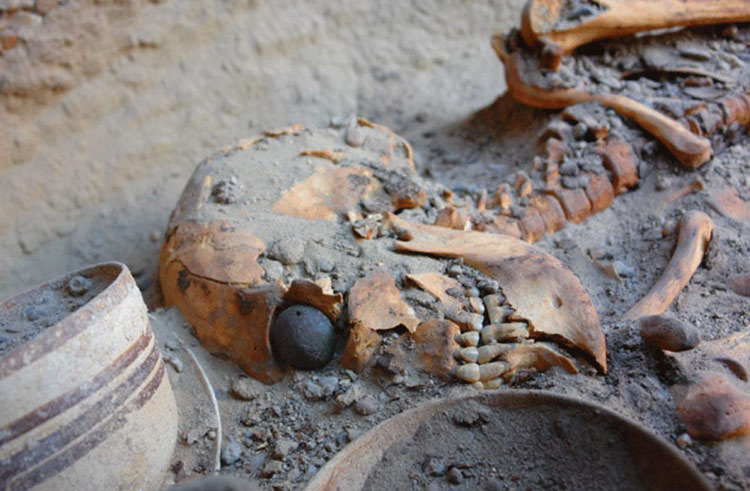
Why is Shahr-e Sukhteh in Iran recognized as a UNESCO world heritage?
UNESCO recognizes the exceptional universal value of Shahr-e Sukhteh and added it to its World Heritage list in 2014 to ensure its protection and preservation for future generations. Here are some of the reasons why:
- Archaeological significance: Shahr-e Sukhteh is one of the largest and most important Bronze Age sites in the region, dating back to the 3rd millennium BCE. The site has yielded a wealth of artifacts and discoveries that offer insight into the daily life and culture of the city’s inhabitants, including pottery, jewelry, tools, weapons, and early writing systems.
- Water management system: The city’s advanced system of water management, with a network of canals and reservoirs that allowed for irrigation and agriculture, is a testament to the ingenuity and technological advancements of its inhabitants.
- Cultural achievements: The city’s sophisticated pottery and metalworking techniques, as well as its use of lapis lazuli, a precious stone that was imported from Afghanistan, are just a few examples of the many cultural achievements of its inhabitants.
- Historical significance: Shahr-e Sukhteh is a significant site for the study of the history of human civilization and the development of society. The city’s advanced social and economic system, as well as its organization into different neighborhoods and districts, offer insight into the evolution of urbanization and city planning.

When to visit Shahr-e Sukhteh?
The best time to visit Shahr-e Sukhteh is during the winter and spring months, from December to May. This is when the weather is milder and more comfortable for exploring the site. During the summer months, from June to September, temperatures in the region can reach up to 40°C (104°F), making it very hot and uncomfortable for outdoor activities. Additionally, the site can be closed during the summer due to the extreme heat.
It is also important to keep in mind that the Sistan and Baluchistan Province, where Shahr-e Sukhteh is located, is a remote and relatively underdeveloped region of Iran. Visitors should plan their trip carefully and be prepared for limited infrastructure and services in the area. It is recommended to hire a guide or join a tour group to ensure a safe and enjoyable visit.
Where is the Shahr-e Sukhteh located?
Shahr-e Sukhteh, also known as the Burnt City, is located in the southeastern province of Sistan and Baluchistan in Iran. The site is situated near the Halil River, which was an important water source for the city’s inhabitants. The nearest city to Shahr-e Sukhteh is Zahedan, which is about 56 kilometers (35 miles) away. The site is relatively remote and can be difficult to reach, but it is well worth the effort for anyone interested in exploring ancient history and culture.
What to visit in Iran after Shahr-e Sukhteh?
We have included Shahr-e Sukhteh in Iran World Heritage Tour. This package offers a unique opportunity to explore the rich cultural and historical heritage of the region, including the stunning World Heritage monuments. Our tour packages offer a comprehensive and immersive experience of Iran’s diverse culture, architecture and nature at reasonable rates.
If you’re interested in exploring more of Iran’s cultural and historical treasures, there are many other destinations worth visiting. Here are a few suggestions:
Zahedan: As the nearest city to Shahr-e Sukhteh, Zahedan is a gateway to the southeastern region of Iran. The city is known for its colorful bazaars, traditional architecture, and hospitable people. Zahedan is also a good base for exploring the nearby deserts and mountains.
Bam Citadel: A massive fortress made of mud bricks that date back to the 6th century BCE. It is another UNESCO world heritage monument located near Shahr-e Sukhteh.
Kerman: The province where Bam is also located there, has great potential to visit. Ganjali Khan Complex, Lut Desert, Rayen Castle and Shazdeh Garden are some to mention.
Persepolis: Located in the southwestern province of Fars, Persepolis is an ancient city that was once the capital of the Achaemenid Empire. The city is home to stunning ruins, including the Gate of All Nations, the Apadana Palace, and the Hall of 100 Columns.
Isfahan: Known as the “half of the world,” Isfahan is a beautiful city with a rich history and stunning architecture. Highlights include the Naqsh-e Jahan Square, the Chehel Sotoun Palace, and the Shah Mosque.
Shiraz: Located in the southern province of Fars, Shiraz is known for its beautiful gardens, historic mosques, and vibrant bazaars. Highlights include the gardens of Eram and Narenjestan, the Vakil Mosque, and the Nasir al-Mulk Mosque.
Yazd: Known for its distinctive architecture and rich culture, Yazd is a desert city located in central Iran. Highlights include the Jameh Mosque, the Amir Chakhmaq Complex, and the Yazd Atash Behram fire temple.
Tehran: The capital city of Iran is a vibrant metropolis with many cultural and historical attractions, including the National Museum of Iran, and the Golestan Palace.
Let us know your experiences of visiting or your questions about the Shahr-e Sukhteh in the comment box below, we will be happy to hear from you!

